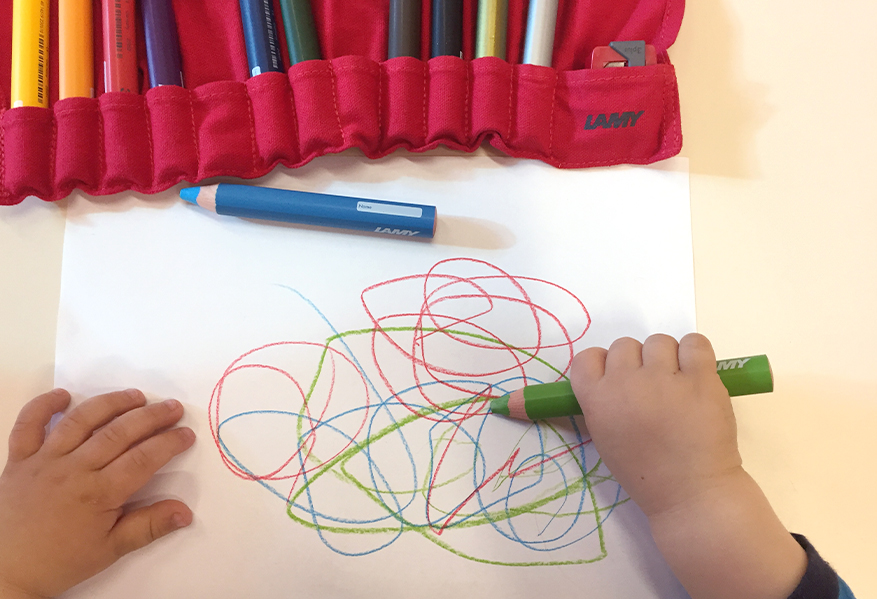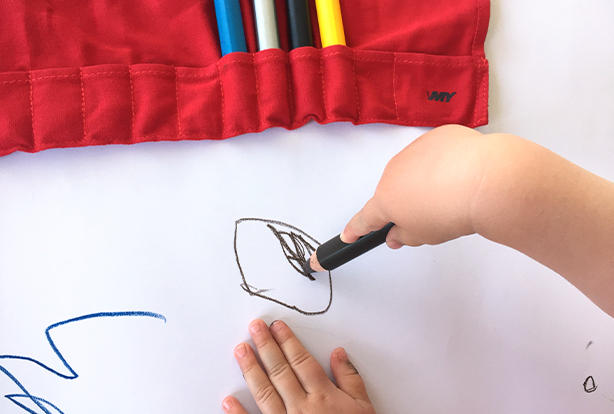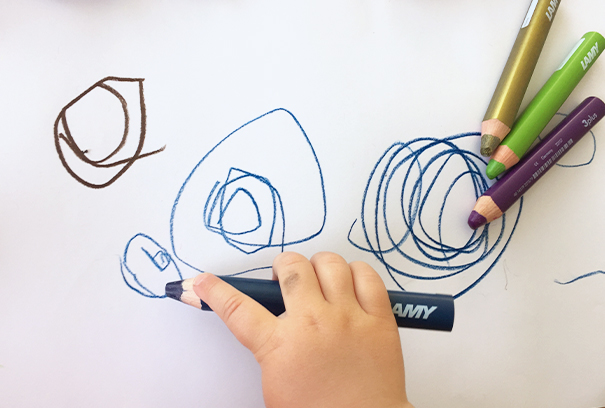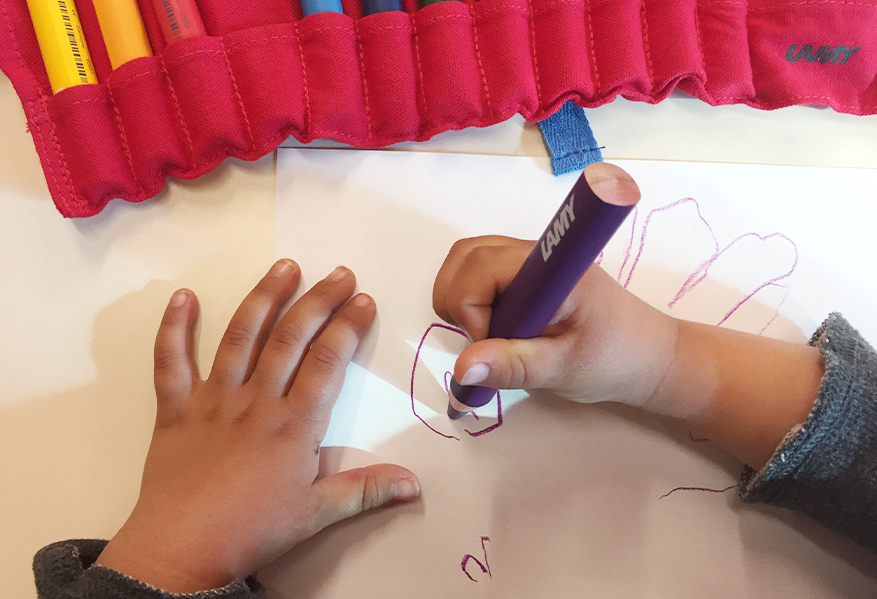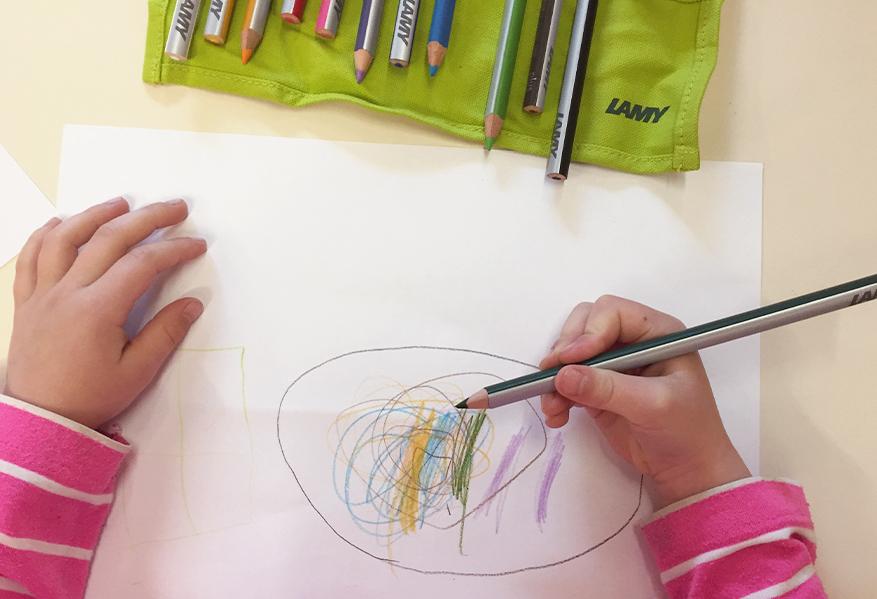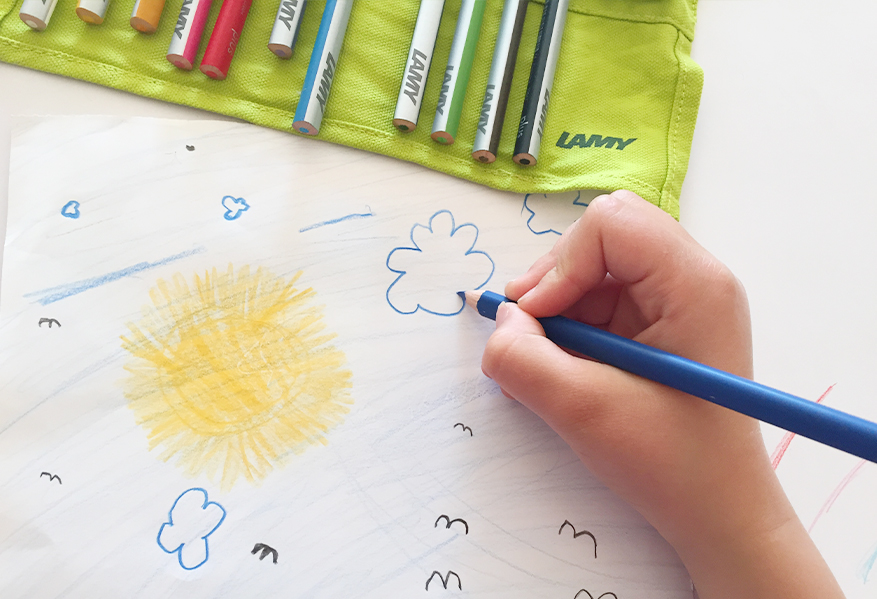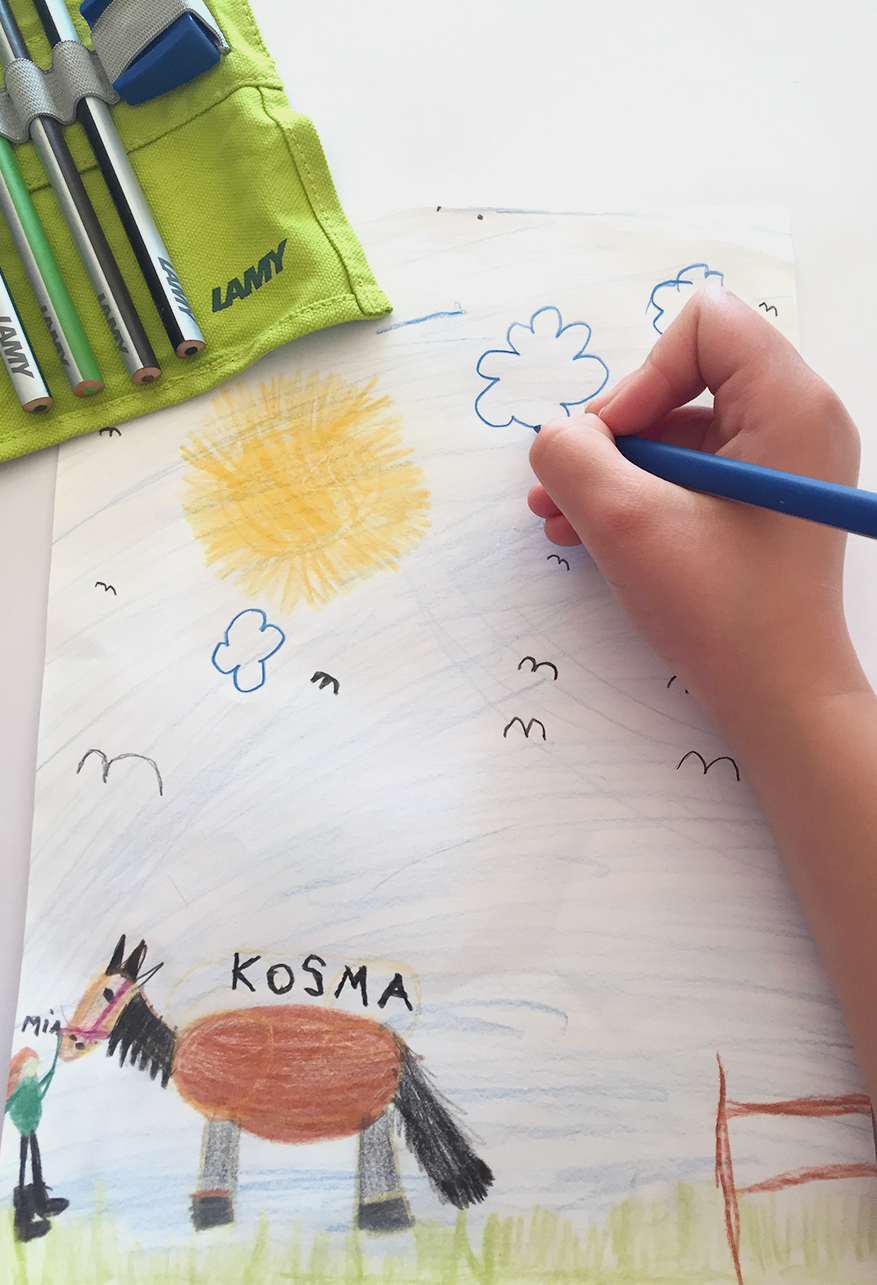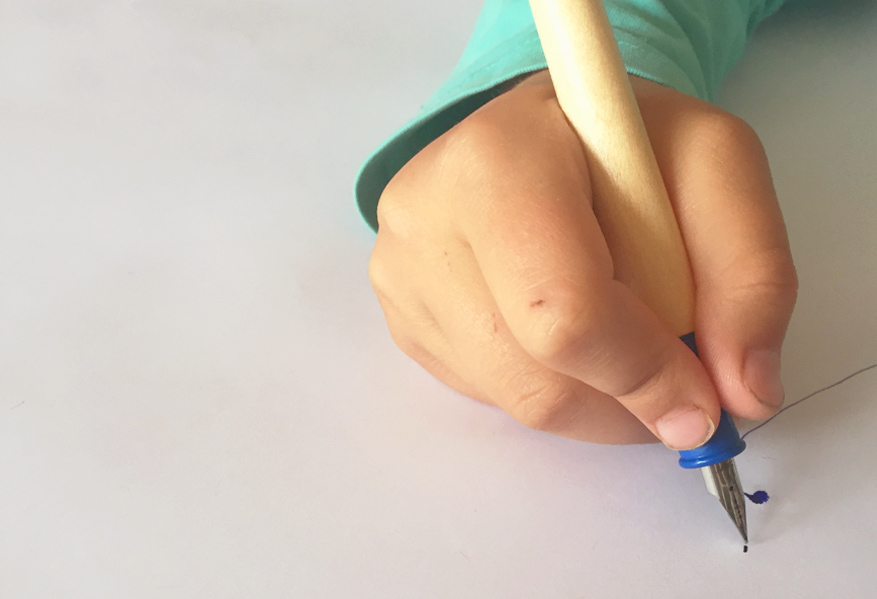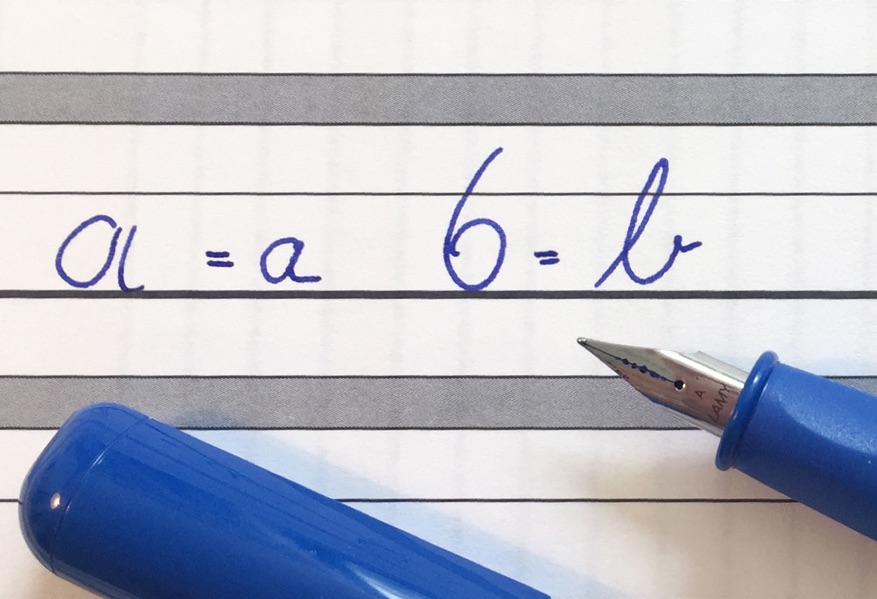The five phases: From the development of children’s drawing to handwriting
Text and image: Astrid Frevel, Lecturer in the department of Occupational Therapy
Drawings are part of the development of any child; they aid exploration of surroundings. Children’s drawings are a blend of conscious and unconscious. They are the first visible expressions and interpretations of an emerging personality. The time of the first drawings depends on how soon the child is
offered pencil and paper and which incentives are received. The living and working environment of the parents has a strong impact on the development of the children, owing to the need for imitation. The external offering remains unused if the maturing processes in the brain are not yet developed accordingly.
1. Movement, play and scribble phase
The crayon is a toy. The pencil is investigated, put in the mouth etc. and it is discovered by chance that it leaves marks. The interest is aroused.
From the age of 1 – 1.5 years: Fist cross-grip, with large movements, energetic and scattered scribbling, cluster, spiral, cross.
From the age of 2 – 3 years: Index finger cross-grip, improved fine motor skills – boxes, spatial experience.
2. Association phase / image interpretation phase
In the middle of the child’s 3rd year: Things are discovered in the living environment which are similar to the shapes drawn. There is a transfer and the picture is given a meaning that the adult does not necessarily recognise. The circle may become the sun, a car tyres or a flower. The child indicates afterwards.
3. Phase of childish realism – imagination – picture experience
More knowledge of the nature and function of the objects in the surroundings changes the drawing. Imagination and changes are still incorporated spontaneously and indicated whilst drawing; parents or the human body are drawn.
Up to the age of 5, head, face, legs and arms are important. From the age of 5 the child should have already clearly decided with which hand to write at school.
At the age of 6: In terms of motor skills, the child should be ready to draw individual elements when drawing people, like fingernails, teeth and navel. From the age of 6 the perspective views blend. There is still no intentional division of the page. Many individual things are drawn scattered across the page.
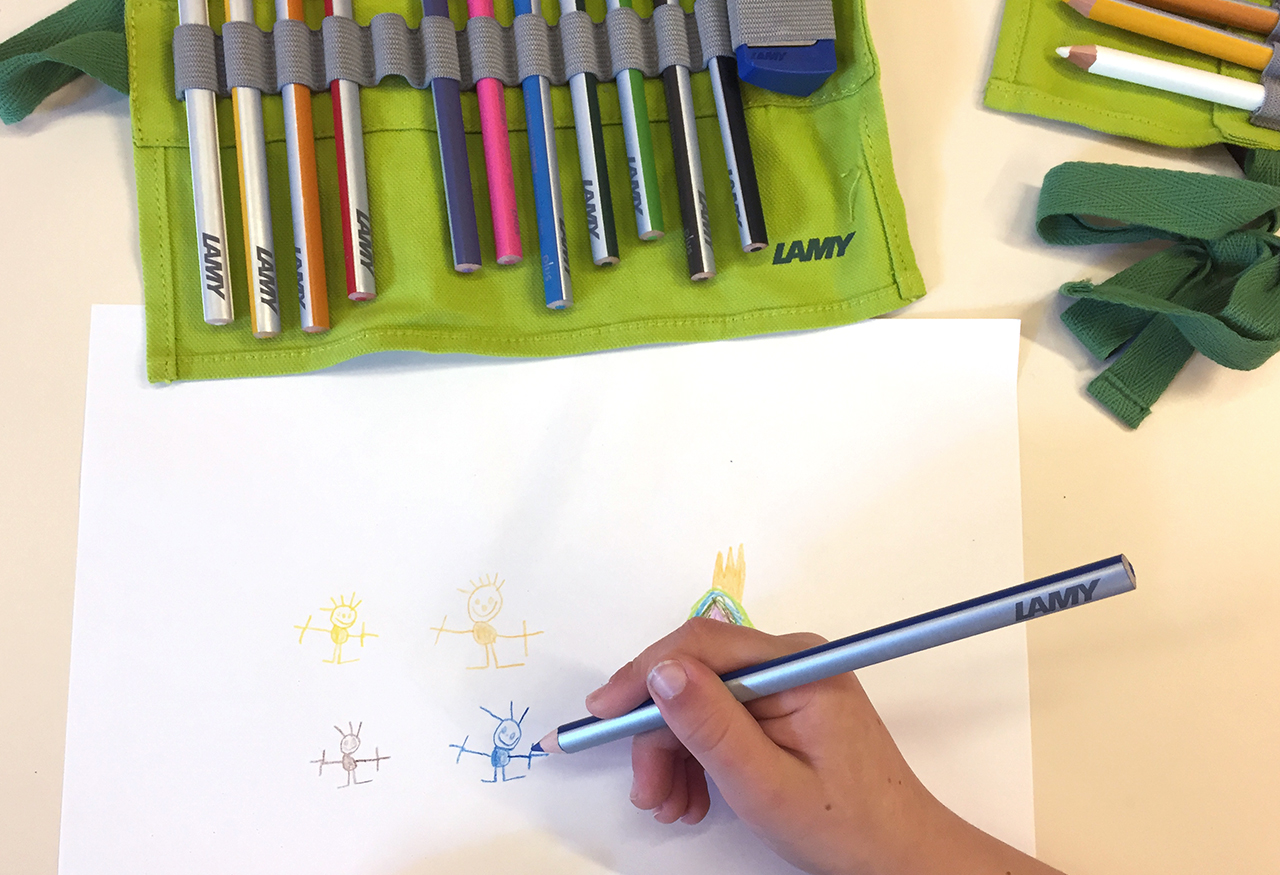
Developed fine motor skills are the basic framework for graphomotor skills and writing. In the development of handwriting the focus is on the demand for legibility and writing fluency or speed. Learning to write is not only a technical production process but a highly complex psychomotor process.
4. Phase: Developing of fine motor skills
Writing comprises the shapes triangle, line, square and circle. These shapes should be mastered at kindergarten age before starting school. “Tracing” happens at 5 years old – lines are copied. Few deviations from the baseline are seen here.
Various systems of the human body are used:
- Physical perception (seeing, feeling, touching, balance, hearing, spatial perception…)
- Motor skills (posture maintenance, mobility, strength ability and speed)
- Coordination (auditory and visual discriminatory ability, spatial orientation skills, responsiveness)
- Thought and the mind (motivation, emotionality, intellectual capacity and imagination, understanding the meaning of words, communication, memory)
5. Phase of visual realism – critical vision when drawing
Starting school allows options for expression other than drawing (language and writing acquisition; focus on the examination of reality).
At the ages of 8 – 10 many children stop drawing because the drawings are regarded critically. Perspective cannot be maintained. A surface is increasingly captured as a space and the child tries to adapt the drawing to reality.
